

Formative Assessment: Bridging the Research - Practice Divide. “Teach, mark, move on: that’s the old paradigm.
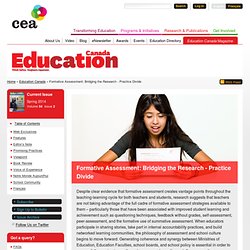
Today’s classrooms have changed. It is important to show the students where they are, how to improve, and where to go from here… It’s no longer about “this is your mark and that’s the end of the story”. ~ Secondary Teacher. How to Do Formative Assessment in Distance Learning. Whether we use synchronous or asynchronous online sessions, whether we call it distance or virtual learning, we’re all challenged to provide meaningful education experiences at a distance as the education world grapples with the impact of Covid-19.
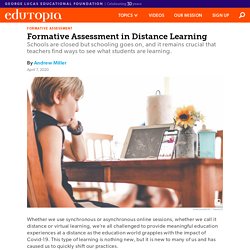
This type of learning is nothing new, but it is new to many of us and has caused us to quickly shift our practices. Formative assessment at a distance is challenging but possible, and we still need to check for understanding and provide meaningful feedback. The practices we use will look and sound different than they do in the classroom. Teachers' Essential Guide to Formative Assessment. How can I use formative assessment to plan instruction and help students drive their own learning?
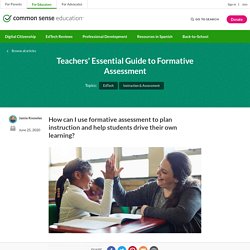
What is formative assessment? What makes a good formative assessment? 5 Critical Steps to Doing Formative Assessments - Illuminate Education. Formative assessments can make a big difference in the classroom.
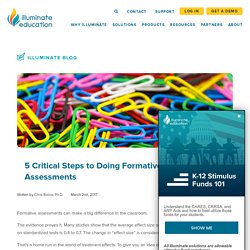
The evidence proves it. Many studies show that the average effect size of the impact of formative assessment on standardized tests is 0.4 to 0.7. The change in “effect size” is considered as going from moderate to strong. That’s a home run in the world of treatment effects. To give you an idea of its impact, that’s equivalent to moving a student from the 25th percentile the 50th percentile. Guide to formative assessment. 7 Smart, Fast Ways to Do Formative Assessment. 33 Digital Tools for Advancing Formative Assessment in the Classroom.
I came across a great blog post the other day – Formative Assessments Are Easier Than You Think – that told the firsthand account of a teacher, Steven Anderson, who implemented formative assessment in his classroom.
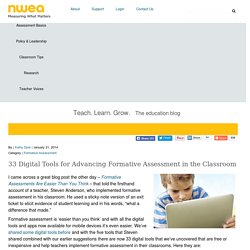
He used a sticky-note version of an exit ticket to elicit evidence of student learning and in his words, “what a difference that made.” Formative assessment is ‘easier than you think’ and with all the digital tools and apps now available for mobile devices it’s even easier. We’ve shared some digital tools before and with the five tools that Steven shared combined with our earlier suggestions there are now 33 digital tools that we’ve uncovered that are free or inexpensive and help teachers implement formative assessment in their classrooms. Here they are: 75 Digital Tools and Apps Teachers Can Use to Support Formative Assessment in the Classroom. There is no shortage of formative assessment strategies, techniques, and tools available to teachers who use formative instructional practice in their classrooms. Here is an extensive list of 75 digital tools, apps, and platforms that can help you and your students use formative assessment to elicit evidence of learning.
We didn’t just add any old tool to this list. Here are the criteria we used for those that made the cut: Top Tech Tools for Formative Assessment. Formative Assessment That Empowers. Do You Check for Understanding Often Enough with Students? A few months ago, I wrote for Edutopia.org about the power of focusing on a few, high-priority standards as a strategy to improve student learning. Many other elements also need to be in play in a classroom in order to produce the results that we all want to see for our students.
To name just a few: The learning environment needs to be one in which students feel respected and safe to take risks; kids need to feel that their learning has a purpose and that the curriculum is relevant to their lives; and students need feedback on their progress -- they need to know what they're trying to accomplish, where they are in relation to the goal, and what they need to do in order to get there.
It is the teacher's role to make sure this happens. Formative Assessment (Strategic Assessment System, Part 1)